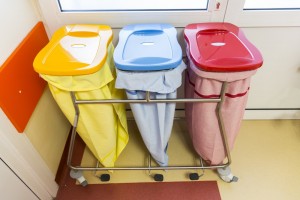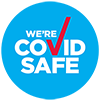Improper medical waste disposal is a common occurrence the world over. This is mostly because of ignorance, lack of waste management and disposal systems, insufficient human resources and low priority given to medical waste management.
Medical wastes do not necessarily come from hospital or clinics. They can be medical paraphernalia such as bandages and swabs from people without proper training on proper disposal procedures.

This lack of awareness on proper disposal is the number one reason they are not disposed properly. Worse, even some junior clinical officers have inadequate training on proper waste management.
And there are several countries that have no appropriate regulations on medical waste disposal or have them but simply do not enforce them. Problem is, this causes extremely serious hazards to people and animals.
Be on the look out for these common medical wastes:
– Syringes and needles washing up on shorelines.
-Infected blood tossed in a landfill seriously contaminating soil around the place.
-Careless or poor handling of pathogens which are inadvertently released fetting them into the air and drinking water sources.
These medical wastes can be classified as biological, chemical or radioactive. Regardless of the type, all poses a risk to health and the environment when disposed improperly.
They include laboratory waste, human tissue waste, and animal waste resulting from medical, biological and dental treatment and veterinary research. .
Improper medical waste management may comprise unsafe actions such as handling the wastes without personal protective equipment and use of uncovered containers instead of closed plastic bags for storage.
Here are the possible effects of poor medical waste disposal:
Air pollution
A lot of hospital waste contains potentially harmful microorganisms, which in turn enter enter and remain in the air in the form of spores or simply as pathogens themselves.
This often contains harmful chemicals such as acid, bleach or oil that should be disposed in approved, correctly labelled containers.
Pollution may also come from people burning such wastes as paper, plastics and other medical containers and materials.
Such chemicals can build up in the ozone layer over time. Some garbage also release harmful gases such as methane, which significantly contribute to global warming.
Contamination of water channels
These are some of the ways medical waste may release pollutants and pathogens:
-Poorly constructed landfills contaminate drinking water through underground water channels. Thus, water facilities must be well designed, operated or maintained.
-Incineration of unsuitable materials or inadequate incineration which releases pollutants into the air. Incinerating materials that contain chlorine can generate furans and dioxins. These are human carcinogens and have been associated with bad health effects. Similarly, if materials contain heavy metals such as lead, mercury and cadmium are incinerated, these toxic metals will be released into the air.
Note that to deal with dioxins and furans, it’s important to use the modern incinerators fitted with special gas-cleaning equipment and operating at temperatures of 850 – 1100 °C.
There are also other medical waste disposal methods alternative to incineration. These include microwaving, autoclaving, steam treatment integrated with internal mixing and chemical treatment that essentially renders the pathogens harmless.
Spread of Communicable Diseases
Improper disposal of health-care waste exposes both clinicians and patients as well as the general public to the danger of contracting infectious diseases, especially those with little or no training on occupational and personal safety.
Over 16 billion injections are estimated to be administered every year. And since not all the needles and syringes used in these procedures are safely disposed, there’s a risk of injury and infection that comes with the opportunities for reuse.
An injection with a contaminated needle and syringe causes the risk of HIV among other infections such as hepatitis B and C.
Other hazards occur to those who scavenge at waste disposal sites. Those who manually sort out hazardous waste from health-care facilities are also exposed to considerable risk of infection.
Yet such practices are really common in many parts of the world, particularly in low- and middle-income countries. The waste handlers are at the immediate risk of exposure to infectious or toxic materials as well as needle-stick personal injuries.
Other possible infectious risks of improper medical waste disposal include the spread of drug-resistant microorganisms into the environment from respective health facilities. These can cause various diseases long after their release into the environment.
Increased attention and diligence
There’s need for increased attention and diligence in approaching the management and disposal of healthcare waste. This is the surest way to avoid the substantial disease burden associated with the poor approach already seen in the practice.
Here are some key elements that may help improve the practice of medical waste management:
-Enforcement of healthcare waste management laws,
-Long term solutions that include building comprehensive medical waste management systems, allocating resources that support proper medical waste management and disposal.
-Raising awareness of the healthcare waste related risks and providing guidelines on safe practices.
-Selecting and championing safe and environment-friendly management options which can protect people from hazards when collecting, handling, transporting, storing, treating or disposing;
Overall, proper management of medical waste is a universal responsibility of clinicians, medical facilities and the general public alike.
The support and commitment of governments are key to attainment of long-term and sustainable improvement in this regard. However, immediate responsible action that starts with YOU.








